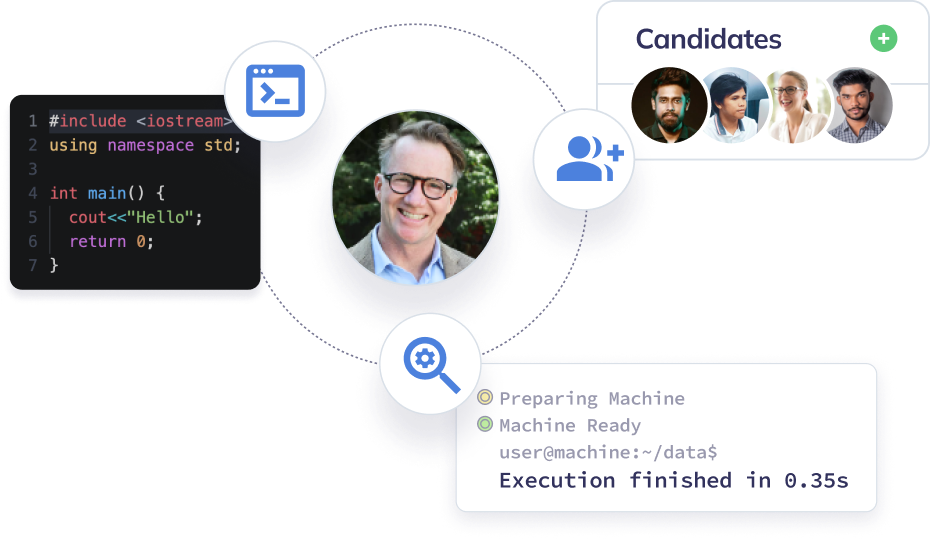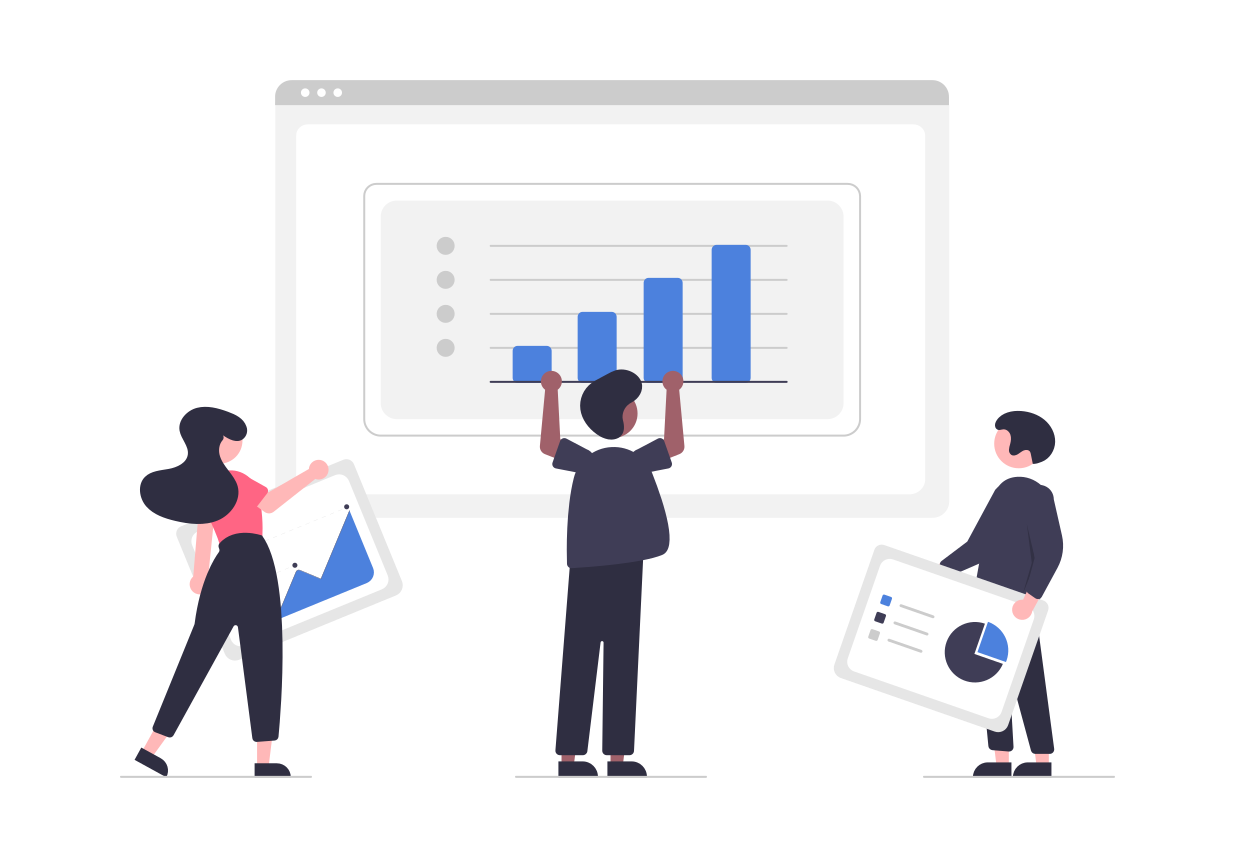Today we will discuss data-driven hiring as it relates to recruiting software developers. We will provide an overview of what data-driven hiring is, its benefits, what kind of data is important to track, and what are the most common data limitations.
What is Data-Driven Hiring
Data-driven hiring is an approach centered around collecting data and using data analytics in hiring decisions. This approach involves gathering data about candidates, the labor market and candidate sources, and using it to improve hiring. The goals of data-driven hiring are to increase the efficiency and effectiveness of recruiting.

The Benefits of Data-Driven Hiring
Here are the main reasons why you should run your recruitment campaigns based on data:
Improved Efficiency
Data-driven hiring can significantly improve efficiency in many areas of recruitment. For example, it can improve the candidate screening process by matching various prerequisites with the candidate’s skill set. Thus, recruiters can automate the screening and preselection process, saving time and effort. It also helps select the most suitable candidates for specific programming roles by matching candidate skills and requirements.
Uncover Hidden Issues
Data-driven hiring can detect issues like bias in the recruitment process. For example, data analytics might identify that male candidates are consistently favored over female candidates for programming roles.
Data analytics can also identify inefficient recruitment processes. For example, your time-to-hire for a front-end developer may be considerably longer than the industry average. Data-driven hiring also helps identify high turnover rates. For example, a high number of newly hired programmers may leave the company within the first three months, signaling an issue with sourcing or onboarding.
Benchmark and Forecast Your Hiring
Data can help you benchmark and prepare hiring forecasts. For example, you can gain insight into the skills, background, and qualifications required for specific programming roles, allowing you to compare your decisions against industry standards.
Employment forecast is another area where data can help recruiters. Data analytics can provide on-demand information about programming skills, how long it takes to fill programming roles, and hiring costs, so you can accurately forecast hiring and allocate resources appropriately.
Decrease Hiring Costs
Data-driven hiring can reduce costs in many ways. It can identify the bottlenecks and inefficiencies in the recruitment process.
For example, you can reduce the cost of high turnover rates by improving the candidate experience throughout the hiring journey. Similarly, you can find the most cost-effective sourcing channels for programmers, reducing recruitment costs and increasing your return on investment.
How to Get Started with Data-Driven Hiring
Here are the steps to get started with data-driven hiring:
1. Define your recruitment goals and objectives
Start by identifying the specific outcomes you hope to achieve through your recruitment process for programmers. For example, you might want to reduce the time-to-hire, improve the candidate experience, or hire more technically skilled programmers.
2. Identify the skills and attributes you are looking for in a programmer
Determine the specific technical and soft skills that are most important for the role, e.g., you are looking for MERN stack developers having excellent communication skills. You can use the data from existing team members, industry standards, and market research to identify these skills.
3. Gather and organize your data
Collect data from various sources, including job applications, resumes, interview notes, coding assignments, and technical assessments. Store this data in a centralized location, such as your applicant tracking system or spreadsheet, to make it easier to analyze.
4. Choose the right recruitment metrics to track and analyze
There are many recruitment metrics you can track for programmers, such as time-to-hire, source of hire, offer acceptance rate, technical assessment scores, communication skills, etc. Choose metrics that align with your recruitment goals and provide meaningful insights into your recruitment process.
5. Analyze data
Analyze the collected data and find any specific pattern or identify facts derived from data e.g. candidates sourced from a particular sourcing channel may be more successful in code interviews.
6. Identify action points
Based on the analysis performed on the data, compile a list of action points to be implemented. For example, a valid action point can be “Facilitate candidates in online code interviews by setting up relevant IDE”.
7. Implement changes
Implement the action items compiled during the data analysis. It can be updating your recruitment policy, changing your applicant tracking system, or integrating a new tool or process in your hiring.
8. Use technology to automate the tracking and analysis of your recruitment data
Whether it’s recruitment analytics platforms, code review tools, or technical assessment platforms, you can likely automate a large part of tracking and analyzing your recruitment data. For example, a code review tool can automatically assess code samples.

What Data to Measure
While it’s tempting to measure everything you can, it’s usually not practical. For this reason, you need to focus on the key data points to collect – the ones with the highest impact for your decisions.
Candidate Data
You need to evaluate the candidate’s technical, problem-solving, communication, analytical, time management, and motivation skills. Technical skills can be evaluated through coding challenges, code samples, and technical interviews. Problem-solving and analytical skills can be measured through analytical quizzes. Communication skills, career goals, and motivation can be evaluated through technical interviews, behavioral interviews, and discussions with the candidate.

Source Data
Record the specific source from which the candidate came. It can be a job board, referral from an existing employee, job fair, hackathon, or job ad. Track how candidates from each source perform later to evaluate how effective each channel is.
Hiring and Performance Data
Hiring and performance metrics are essential for data-driven hiring. Some of the key data points which should be recorded include the following:
- Time-to-hire
- Offer acceptance rate
- Cost per hire
- Candidate assessment results
- Performance evaluations of current employees
- Retention rates for employees hired
- Employee satisfaction data gathered through exit interviews
Market Data
Market data is important to record because of the effects of demand and supply on your decisions. Some of the key areas which should be measured are the following:
- Demand: Is a particular type of resource high in demand? For example, experienced Kubernetes specialists might be in high demand in a particular job market.
- Salary Trends: Average salaries for programmers with similar experience and skillset
- Location: The cost of living and local job market conditions can have an impact on your strategy
Recommended reading: Tech Hiring Trends: What Engineering and Talent Leaders Need to Know
Limitations of Data
There are a few limitations that should be considered, such as:
Data Accuracy
If the data collected on a programmer’s technical skills is incorrect, it can lead to inaccurate results. For example, mistakenly confusing Next.JS IDE with Nest.JS IDE could lead to misinformed decisions about the candidate’s suitability for the role.
Bias in Data Collection
If the data collected on a programmer’s experience is only from their current or past employers, this may not provide a full picture of their qualifications and could be biased towards positive or negative experiences.
Human Factors
Data on a programmer’s technical skills and experience may suggest that they are highly qualified for the position, but without evaluating their personality and cultural fit, they may not be a good selection for the team or company culture.
Time Lag
Data collected on the job market for programmers may be obsolete by the time the recruitment process begins, and rapid changes in demand or competition could impact the ability to find the right candidates.
Limited Scope
For example, data collected on a programmer’s experience and skills may not provide insights into their potential for growth and development or their interest in taking on new challenges and responsibilities within the role.
Conclusion
In this article, we discussed data-driven hiring in detail including its benefits and what kind of data should be measured. Are you ready to get started with data-driven recruiting to hire top-notch programmers? CodeInterview is a technical assessment tool that helps you streamline recruiting and improve decision-making in the long term. Start your free trial or request a product demo here.
Further reading:
- 9 Technical Recruiting Trends You Should Know About in 2023
- How to use ChatGPT to Create and Evaluate Technical Interview Questions
- How to Improve Your Response Rate for Tech Roles
- The Year of Efficiency: Is it Easier to Hire Tech Talent in 2023?

